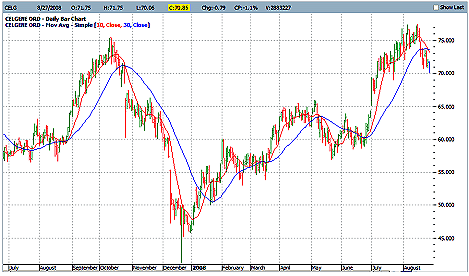The Basics Of The Long Ratio Backspread
Post on: 3 Июль, 2015 No Comment

One of the primary benefits of trading options is the ability afforded to a trader to craft a position with specific reward/risk characteristics that are not available to the trader who deals only in the underlying stock or futures contract.
What this means is that the buyer of 100 shares of stock will make or lose $100 every time the stock rises or falls $1 in price. An options trader, however, is not limited to this straightforward equation; he or she can enter a position that will make money if the underlying security goes up a lot, goes up a little, stays in a particular range, goes down a little, and so on and so forth. The key to success is to understand the actual reward-to-risk characteristics for a given strategy and apply the appropriate strategy at the appropriate time. (To learn more on how options can be used to customize your trade, check out our Options Basics Tutorial .)
One strategy that offers a unique reward-to-risk profile is known as the long ratio backspread . This strategy is quite different from many other option trading strategies. Most traders new to options focus on writing covered calls — which limits profit potential and offsets only a small portion of downside risk — or buying calls and puts — which offer unlimited profit potential but which also run the risk of a complete loss of the premium paid if the underlying security fails to move in the anticipated direction. (Check out our related article Backspreads: Good News For Breakout Traders to learn more about backspreads and their uses.)
A long ratio backspread allows a bullish trader to enjoy unlimited upside profit potential as well as the opportunity to make a profit if the underlying security declines in price. Likewise, a trader who is bearish can enjoy unlimited profit potential if the security declines in price, as well as the opportunity to make a small profit if the underlying security rises in price. As with any strategy, there is no free lunch. Whether using call or put options, this strategy can lose money if the underlying security remains in a trading range until option expiration.
Definition of a Long Ratio Backspread
A long ratio backspread (for the sake of simplicity, heretofore referred to simply as a backspread) can use either call or put options, depending on whether you primarily expect the underlying security to rise or fall in price.
To enter a backspread using call options a trader would:
- Sell a call option with a lower strike price and;
- Simultaneously buy a greater number of call options with a higher strike price.
Most typically this is done in a ratio of 1:02 or 2:3. In other words, a trader who is bullish on a particular stock might sell one call option with a strike price of 20 and buy two call options with a strike price of 25. This is known as a call ratio backspread. On the other end of the spectrum, a trader who is bearish on a given stock might sell two put options with a strike price of 55 and buy three put options with a strike price of 50. This is known as a put ratio backspread. Together, they are both known as long ratio backspreads because the long component of each is larger than the short components.














